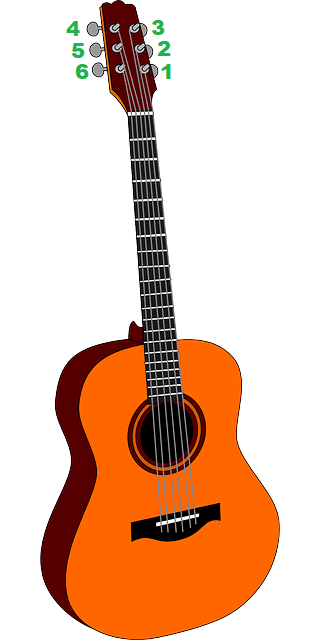Guitar tuning
How tune your guitar
Understanding the Strings

- 6th String (Low E)
- 5th String (A)
- 4th String (D)
- 3rd String (G)
- 2nd String (B)
- 1st String (High E)
A standard guitar has six strings, which are usually tuned to the following notes (from the thickest to the thinnest string):
- 6th String (Low E) - E2
- 5th String (A) - A2
- 4th String (D) - D3
- 3rd String (G) - G3
- 2nd String (B) - B3
- 1st String (High E) - E4
Method 1: tune using a tuner
It's recommended to use an electronic tuner for accurate tuning (they are quite cheap). Here's how to use it:
- Pluck a string.
- Observe the tuner display. It will show if the note is sharp or flat.
- If it's sharp, turn the tuning peg clockwise to raise the pitch (tightening the string).
- If it's flat, turn the tuning peg anticlockwise to lower the pitch (loosening the string).
- Continue adjusting and plucking until the tuner displays the correct note for that string.
Metod 2: tuning by ear
If you don't have a tuner, you can also tune your guitar by ear. Here's a method:
- Use an external reference note, such as a piano or online tuner, to get your 6th string (Low E) in tune. Alternatively, you can use the fifth string (A).
- Then, tune the other strings relative to the 6th (or 5th) string using frets and matching the sound.
Method 3: tune by playing notes for comparison
You can use the following notes to play each string's sound and compare them by ear:
- 6th String (Low E)
- 5th String (A)
- 4th String (D)
- 3rd String (G)
- 2nd String (B)
- 1st String (High E)
Now you have the option to play the notes and compare by ear when tuning your guitar. Happy playing!